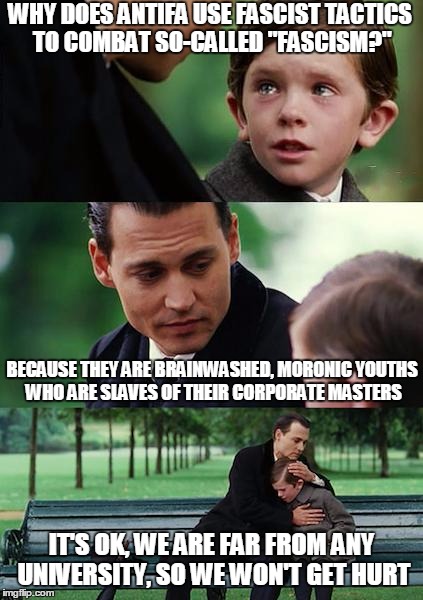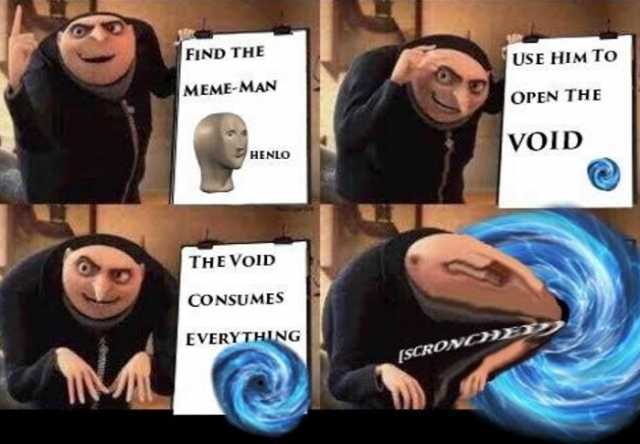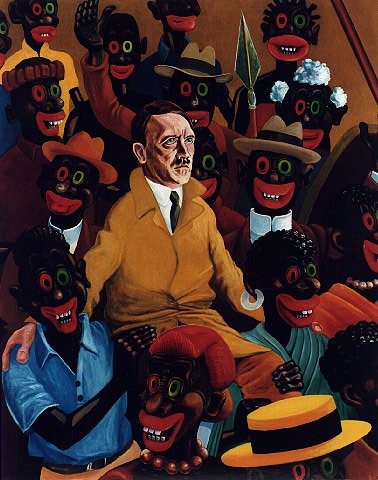
Historians tend to define fascism in terms of its historical manifestations, sometimes warning not to (over)use it in contemporary contexts. Yet, in the past few years, the world has seen the rise to power of figures like Trump, Duterte, Orban, and Bolsonaro, the stunning impact of the Alt-Right movement, and the Cambridge Analytica-scandal. Unsurprisingly, the slumbering interest in contemporary fascisms amongst cultural theorists and net critics has risen once again.
In November 2017, Sara-Lot van Uum and I interviewed Geert Lovink on the topic of meme fascism for the Fascism issue of student-run magazine Simulacrum, seeking to formulate a conceptual bridge from ‘historical fascism’ to ‘contemporary fascism’. We wondered: can we use the notion of fascism to analyze Trumpism and the Alt-Right movement? Can we use ‘fascism’ to refer merely to a specific mode of societal organization, or also to a psychoanalytical mechanism?
In the year between Simulacrum’s interview and today, contemporary fascism has grown to be one of INC’s focus themes. For example, the two most recent INC Longforms are Pim van den Berg’s Execute Order 66: How Prequel Memes Became Indebted to Fascist Dictatorship and Roberto Simanowski’s Brave New Screens: Soma, FOMO, and Friendly Fascism After 1984. Furthermore, INC is working on the publication of BILWET: Fascisme, an anthology of Adilkno’s critical theory of ‘contemporary fascism’ from the 1970’s and 1980’s.
Today, I find myself working on this Bilwet/Adilkno publication. Wondering about the contemporary relevance of these texts from the 1970’s and 1980’s, I was reminded of the interview I conducted last year and decided to translate it.
First Panel – Contemporary Fascism: Method and Definition
Sara-Lot and Sepp: There is a lot of talk about fascism today, more than, say, five or ten years ago. Yet, this interest in fascism after the 1940s is not unique. Already in the late 1970s and throughout the ‘80s, you have extensively theorized ‘contemporary fascism’. Which methods of fascism analysis and what definitions of fascism did you have at the time?
Geert: The dominant discourse in the 1970s was characterized by a somewhat vulgar Marxist economic and political understanding that the major force behind the rise of Hitler and Mussolini was capital. This understanding held that the economic crisis in the 1930s was an effect of capitalism, but that the discontent caused by it found its political articulation in the fascist movements. Thus, already in the 1960s and 1970s, fascism was analyzed in predominantly historical terms.
Then, in the 1980s, after studying Political Science in Amsterdam, I went to Berlin and joined the writers’ collective Adilkno (Foundation for the Advancement of Illegal Knowledge). One of the first things we did in this collective was an attempt to reinvent the method of fascism analysis. Opposing the dominant historical mode of analysis, we drew on the psychoanalytical tradition of Freudo-Marxism. The latter discourse has its roots in Wilhelm Reich’s Fascism and Mass Psychology (1933), the first attempt to integrate Marxism and psychoanalysis. Freudo-Marxism became popular in the mid-1970’s, because it offered a foundation for a broader discourse, from the feminist socialist movements, in which the relationship between sexes is of crucial import, to academic exercises such as Cultural Studies. This large and important shift was most clearly articulated by Klaus Theweleit in Männerphantasien (1977), which brought together, for the first time, all the elements needed for a new type of analysis and a new definition: fascism as the over-identification of masculine ideals and their societal articulations.
This focus on the collective psychological structures latently present in all of us led to a problematization of the division of ‘good’ and ‘evil’ in the dominant discourse of fascism. Speaking of fascism in these terms was no longer a matter of projection onto the other, but a moment of collective self-analysis. Leading questions in such self-reflection were: what was it in fascism that people felt related to them? Why were fascist movements so popular? In Adilkno, we aimed to ask exactly these types of questions in the 1970s. Also, drawing on Foucault, we added to the lines of fascism and anti-fascism a line of non-fascism. By thoroughly analyzing the roots of the problem, we tried to formulate something close to a Hegelian synthesis rather than an anti-position.
A good example of how we used this new method and definition in Adilkno is Sexism-Fascism: A Reconstruction of a Men’s Ideal, a book which Basjan van Stam wrote after studying at the Free University in Amsterdam. In this book, a series of character traits are described as typically fascist: militaristic, explosive, hierarchic, though, superior, disciplined, performance-oriented, protective, full of expansion drift, sexist. In short: an extremely dominant masculine ideal. The type of characteristics we observe in Trump today.


You might ask why chose to analyze fascism in terms of sexism rather than racism, antisemitism, or homophobia. Again, I think this is because we are talking about a self-oriented analysis. There is a major problem in analyzing fascism in terms of racism or antisemitism: one ends up analyzing the other instead of oneself. This type of analysis supposes that we should learn to tolerate one another. In Adilkno, we were not satisfied in saying: if just we had properly liked Jews, nothing bad had happened. We wanted something more self-critical, contemporary, and fundamental. For instance, in Sexism-Fascism, Basjan analyzed the contemporary fascism implied in a series of Tintin albums.
Second Panel – The Emergence of Digital Culture: From Self-Psychoanalysis to New Media Theory

Sara-Lot and Sepp: It is interesting how you were working with the notion of contemporary fascism in the 1970s, but it may be even more interesting is the gap of the 1980s and 1990s. Before making the leap from the late 1970s to today’s situation, shall we consider what happened in this gap? It was a period which saw the emergence of postmodern thought and a decline in the popularity of psychoanalysis. Moreover, it is in this period that digital media and culture emerged. Can you explain your own trajectory within this gap/shift in contemporary fascist analysis and elaborate how you have come to focus on discourses like meme theory?
Geert: There was a very clear shift in the 1980s and 1990s from classic Freudianism, the clinical picture, and the ideas of analysis and therapy, to a much broader cultural analysis – paving the way for theoreticians such as Deleuze and Guattari, Baudrillard, and many others. I see this shift as a reorientation of the fundamental terminology in psychoanalysis. For me, this crisis in psychoanalysis and the subsequent postmodern reorientation resulted in a focus on new media theory.
I should note here that I did not enter new media as an outsider, but as an activist. We, digital activists, strongly believed that we could re-appropriate the top-down propaganda discourse of power by democratizing media. Actually, I still think that. Don’t misunderstand me: I see that we live in the era of Facebook and Google. Decentral digital activists have lost big time. Still, I keep believing that decentral networks can undermine all power relations (in Foucault’s sense) on the long run.

When I turned to media theory as means of activism, I found notion of the meme to be a central one. This is a notion derived from Richard Dawkins’s book The Selfish Gene (1976). Dawkins theorized the meme as a condensation of culture in the shape of a symbol that moves of its own accord through (digital) networks. This concept, the existence of such symbols, implies that ideology is not constructed solely by the big institutions. The meme is the neoliberal antipode of the ideological state apparatus (in Althusser’s sense). In the meme, an ideology is summarized in the condensed shape of a crystal. The power of such a symbol is that it brings together elements of identity and desire that speak to a lot of people.

New media theory, then, started studying this meme-crystal, but it was certainly not the first approach to analyze the power of the compressed image. We can see earlier attempts in visual culture, iconography, and – here we come full-circle – psychoanalysis. Even though it was a good tool, the problem with psychoanalysis has always been that it unconsciously stuck to top-down logic. Psychoanalysis always studies how the individual was appelated by power. In meme culture, the functions are reversed. Here, the central user is the user/blogger, who autonomously and decentrally works with the elements of desire and identity.
For this reason, we see an interesting relation between political views, ideological structures, and the emergence of memes. We can observe elements of propaganda in memes, but memes are never propaganda proper. Why? Because the primary subject of the meme is the very psychological constellation of the nerd, which means that memes are ever ironic. At the same time, exactly because of this self-referential quality, memes have the potential to mobilize discomfort, even when the individuals who create them have no clue by which political agendas these memes can later, in another constellation, be appropriated. This is dangerous. We cannot afford to be naïve about the danger of memes. There is a real possibility of political mobilization through memes. It is clear that old-fashioned populist politicians, such as Geert Wilders, do not appeal to younger generations at all. Memes, on the contrary, appeal very strongly to a broad, diffuse, and young public.
Third Panel – Meme-Fascism: Reading Escalated Innocence

Sara-Lot and Sepp: So, the activist potentials of decentralized networks brought to fore new media theory. However, the same decentralized networks resulted in the impossibility of psychoanalytical reading of the crowd in the digital age and thereby multiplied the task of new media theory: not only did it have to replace the activist function of psychoanalysis, but also the explanatory one. How do you see this task today? What can media theory say about meme-fascism, building on psychoanalysis after the failure of psychoanalysis?
Geert: If we were to attempt any sort of psychoanalytical or explanatory reading of meme culture, a directly political reading would be doomed to fail. Take, for example, cat images. These images contain a type of escalated innocence. The fact that millions of people spend millions of hours staring at innocent cats on their monitors implies a huge amount of poorly masked discomfort in everyday life. We could, of course, make some kind of quantitative analysis, we could map and visualize digital communication. But I think the real work starts only when we analyze compressed symbols and their separate parts using visual and psychoanalytical methods. The problem is that it is extremely hard to trace the narrative element necessary to turn this implication into substantial psychoanalytical theory. Digital communication is so fast, that the narrative element is immediately undermined and negated by the massive amounts of new information constantly pouring in.
For this reason, one could argue for a meme-analysis beyond psychoanalysis. However, this is exactly where Deleuzian strategy fails. Deleuzians are stuck exclaiming: ‘It’s a marvelous production! Ah! Production! Great! Wonderful!’ They can’t seem to proceed past this point.
So, however skeptical I am about the contemporary potential of psychoanalysis, I think that we somehow need the notion of contemporary fascism in explaining why memes are so popular, and why a very diffuse group of young men, nerds, is capable of making real political impact. Today’s Left, in being academically and politically correct, is incapable of communicating with these nerds.

Of course, we should give a lot of attention to the rise of the new Right. Yet, if you would ask me, looking at the specific examples of meme-fascism we see today, if meme culture is directly dangerous, I would say ‘no’. For instance, looking at the Alt-Right movement, we can clearly see a men’s ideal. But I think that this is a highly defensive and reactionary movement. If they do not rise to power now, they will soon cease to be visible forever. Moreover, I think that there are many possibilities of blowing up toxic meme culture from the inside, and to develop subversive strands of meme culture. We can create a language to create new majorities and to co-create new images that doappeal to people (this was already propagated in the 1930s within movements striving for a popular front). This is our challenge today. It is clear that artists and designers have a major task, but so do back-end developers, who determine the architecture of new technologies.
Speaking about these developers, I should emphasize that Google, Facebook, and other tech companies are extremely ambivalent in the matter we are discussing. On the one hand, they facilitate the phenomenon of meme-fascism, but, on the other hand, they are aligned to the global, liberal elites that do not identify with right-wing populist movements whatsoever. This means that Sillicon Valley should be put on the spot. So far, they have always said: ‘We only create the technical infrastructure, we shape the collective techno-subconscious, but we do not define what is articulated there.’ As the Cambridge Analytics scandal has shown, this position is untenable.
This brings us to the not-so-disciplined interdiscipline of media archeology. Because of its focus on materiality, media archeology is extremely important when looking at memes. It allows for the analysis of internal workings of the smartphone, to see how the interfaces of applications interact with the backends of chips and network structures. Why is it so easy to swipe? Which unconscious structures are called upon when we start ‘liking’? To the extent that it is materialistic, media archeology brings psychoanalysis back into the picture in a well-grounded manner.

So, how can Adilkno’s conception of contemporary fascism inform this material analysis of today’s digital infrastructures? I would say that the most important issue is today’s cynicism or nihilism. With its political correctness, the Left does not address but simply denies the broadly present contemporary nihilism. There is nothing more dangerous than this denial! Nihilism is not exactly racism, or antisemitism, but it does provide a fertile ground for sentiments like that. We should go at length to ask ourselves: what is so appealing about this nihilism? When people see that there is no clear direction in their lives, that they are jobless or permanently work under precarious circumstances, the nihilist idealism of complete detachment is tempting. Moreover, since memes are a part of male-dominated nerd culture, meme-nihilism includes contemporary insecurities about what masculinity is today. Therefore, meme-nihilism incubates a new men’s ideal.



